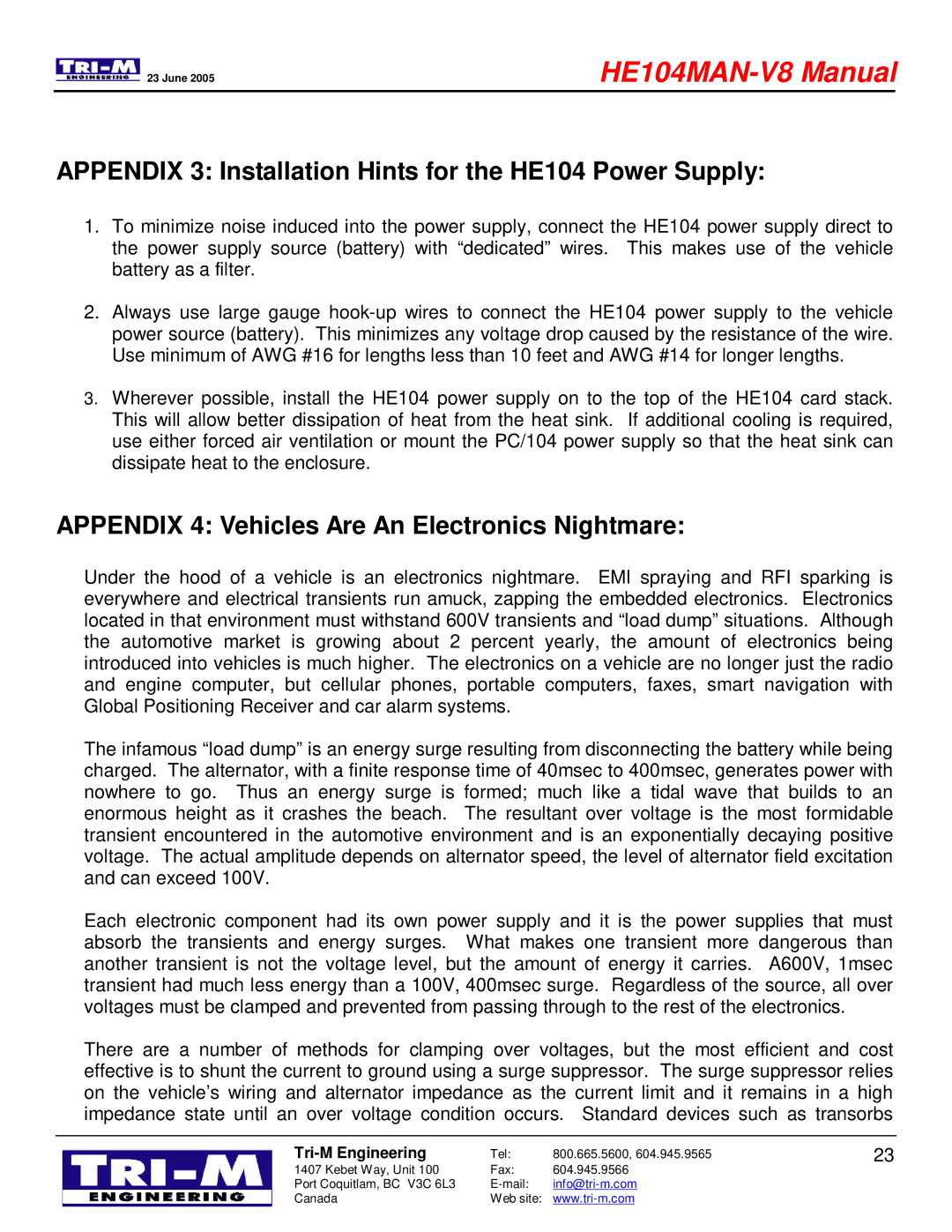
23 June 2005
HE104MAN-V8 Manual
APPENDIX 3: Installation Hints for the HE104 Power Supply:
1.To minimize noise induced into the power supply, connect the HE104 power supply direct to the power supply source (battery) with “dedicated” wires. This makes use of the vehicle battery as a filter.
2.Always use large gauge
3.Wherever possible, install the HE104 power supply on to the top of the HE104 card stack. This will allow better dissipation of heat from the heat sink. If additional cooling is required, use either forced air ventilation or mount the PC/104 power supply so that the heat sink can dissipate heat to the enclosure.
APPENDIX 4: Vehicles Are An Electronics Nightmare:
Under the hood of a vehicle is an electronics nightmare. EMI spraying and RFI sparking is everywhere and electrical transients run amuck, zapping the embedded electronics. Electronics located in that environment must withstand 600V transients and “load dump” situations. Although the automotive market is growing about 2 percent yearly, the amount of electronics being introduced into vehicles is much higher. The electronics on a vehicle are no longer just the radio and engine computer, but cellular phones, portable computers, faxes, smart navigation with Global Positioning Receiver and car alarm systems.
The infamous “load dump” is an energy surge resulting from disconnecting the battery while being charged. The alternator, with a finite response time of 40msec to 400msec, generates power with nowhere to go. Thus an energy surge is formed; much like a tidal wave that builds to an enormous height as it crashes the beach. The resultant over voltage is the most formidable transient encountered in the automotive environment and is an exponentially decaying positive voltage. The actual amplitude depends on alternator speed, the level of alternator field excitation and can exceed 100V.
Each electronic component had its own power supply and it is the power supplies that must absorb the transients and energy surges. What makes one transient more dangerous than another transient is not the voltage level, but the amount of energy it carries. A600V, 1msec transient had much less energy than a 100V, 400msec surge. Regardless of the source, all over voltages must be clamped and prevented from passing through to the rest of the electronics.
There are a number of methods for clamping over voltages, but the most efficient and cost effective is to shunt the current to ground using a surge suppressor. The surge suppressor relies on the vehicle’s wiring and alternator impedance as the current limit and it remains in a high impedance state until an over voltage condition occurs. Standard devices such as transorbs
| Tel: | 800.665.5600, 604.945.9565 | 23 |
1407 Kebet Way, Unit 100 | Fax: | 604.945.9566 |
|
Port Coquitlam, BC V3C 6L3 |
| ||
Canada | Web site: |
|
